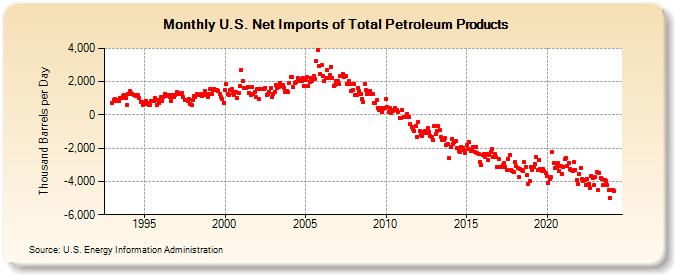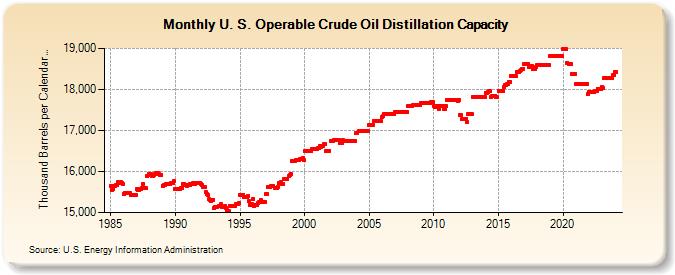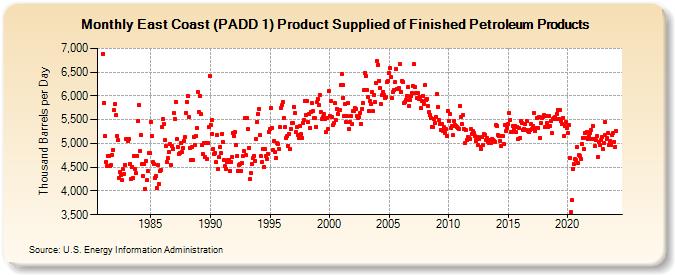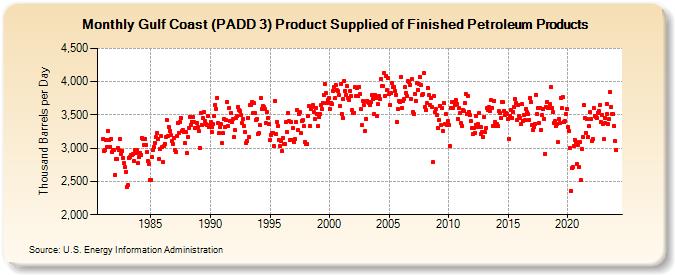
Posted on 01/09/2012 6:08:47 AM PST by thackney
Northeastern states are slated to lose half of their regional capacity for fuel production by midyear as financial woes push refineries there to idle, a trend likely to increase the region’s dependency on Gulf Coast supply.
A Houston-to-New York pipeline is making major expansions to accommodate growing demand to transport gasoline and other fuels up north from the Gulf Coast to fill the potential supply void.
The Gulf already supplies about half of the Northeast’s demand for petroleum products, said Mindi Farber-Deanda, head of the liquid fuels market team for the U.S. Energy Information Administration.
But the shutdown of production at two major Pennsylvania refineries last year and potential closure of a third could put the region in a precarious position and stress supplies of gasoline, jet fuel and heating oil, the agency concluded in a new report.
“It’s marginal, but it matters,” Farber-Deanda said of the drop in the Northeast’s local fuel production. “Before, you could get a certain percentage of supply from local refineries. Now you get it from Europe and the Gulf.”
The report noted that Northeastern states could experience “spot shortages with price hikes” for gasoline and other fuels as refineries discontinue operations.
Sunoco announced last month that it will idle operation of its 335,000 barrel-per-day refinery in Marcus Hook, Pa., part of the company’s plan to pull out of the refining business altogether. If Sunoco doesn’t find a buyer for its 178,000-barrel-per-day Philadelphia refinery by July, it will go off line, too, the company has said.
ConocoPhillips announced a similar move in September, taking its 185,000-barrel-per-day Trainer, Pa., refinery off line to prepare it for sale.
Pressure points
A combination of the sagging economy and improved fuel efficiency in vehicles and equipment has caused demand for some fuels to plateau. Meanwhile, competition from larger and more efficient refineries on the Gulf Coast and imports from Europe put pressure on local fuel producers, said Bill Day, a spokesman for San Antonio-based refiner Valero.
“They found it very difficult to compete,” he said. “If there was demand for product there, those refineries wouldn’t close down.”
Valero pulled out of the Northeast in 2010, when it sold its Delaware City, Del., and Paulsboro, N.J., refineries.
The struggling European economy has left refiners on the continent with plenty of gasoline to ship overseas.
Cleaner heating oil
A bigger concern for the Northeast is heating oil.
Demand for ultra-low-sulfur heating oil is expected to rise next fall, when regulations taking effect in New York will require use of the cleaner fuel in boilers that warm buildings. A limited number of refineries are equipped to produce it.
“Heating oil concerns are probably the greatest,” said Terry Higgins, executive director of refining for consulting company Hart Energy. “A cold snap, with a strong surge on heating oil needs, could be a strain on the system.”
Room to grow
The Gulf Coast is replete with refineries that are expanding or have room to increase production, he said. Motiva Enterprises, a joint venture of Shell and Saudi Aramco, is nearing the end of a massive expansion of its Port Arthur refinery to increase production of ultra-low sulfur fuel and other petroleum products.
In 2010, Gulf Coast area refiners produced a net 3.4 million barrels per day of ultralow-sulfur distillate fuel oil, a category that includes the clean heating oil, according to Energy Information Administration data. That’s up from just 23,000 barrels per day in 2005.
Colonial Pipeline, a major thoroughfare for shipping fuels from Gulf Coast refineries to East Coast markets, has seen growing demand from refiners to ship larger amounts of its products north, spokesman Steve Baker said.
The 5,500-mile pipeline transports heating oil, as well as gasoline, diesel fuel and other petroleum products.
Last year, Colonial added 120,000 barrels per day of carrying capacity to its system. By mid-2012, it will have expanded the flow of distillates – including heating oil, jet fuel and diesel – by another 55,000 barrels per day. In December, the company announced it would expand its gasoline transport capacity by another 100,000 barrels per day.
In total, the expansions will increase the system’s capacity by about 8 percent, Baker said.
“We have seen a rising demand throughout the year” for fuel transport between the Gulf Coast and the Northeast, Baker said. “These are big capital investments. It’s a significant increase.”

So, just before Christmas I saw a story indicating America was awash in gasoline. In the absense of any other info it appears the oil industry’s answer is to reduce refining capacity because of some alleged “financial woes”.
Can anybody out there tell me what the financial woes are?
But pipelines are EVIL! /s
All those liberals in New York would freeze in the dark without coal and oil.
Isn't the demand greater in the NE corridor than in the gulf states, given the cold winters and dense population?
It does not make sense that the PA refineries are losing money, while the gulf coast can sustain them.

While high oil prices bring lots of dollars to the upstream producers, that high oil price is a cost of feedstock to refineries and has made it a rather tight business as of late.

I would say many business are more economically in the Gulf Coast versus the Northeast. Given more of the available feedstock for those business are located here, it makes even more sense. As an additional plus, it is cheaper to operate a refinery outside of freezing temperatures.
Isn't the demand greater in the NE corridor than in the gulf states, given the cold winters and dense population?
The demand in the Northeast has fallen significantly.

While the gulf coast hasn't seen that amount of decline.

they can be buried in coal and oil, and still freeze in the dark if they won't turn it into electricity and gasoline.
Yep, isn’t that something, a pipeline from here to the northeast is good, but a pipeline from Canada to here is bad.
Regarding the heating oil issue;
I was under the impression that all US refineries had upgraded to ULSD by now...
It does not make sense that the PA refineries are losing money, while the gulf coast can sustain them.”
Closing down of small or obsolete refineries is a trend that has been consistent since the 1970’s. I don't know the specifics on these exact refineries but generally what causes the breaking point is an economy of scale that favors larger refineries for lowest operation cost and greatest profitability that allows sufficient capital investment for modernization.
Under the ULSD regulations, a minimum of 80 percent of the diesel fuel produced for highway vehicles must be ULSD with a maximum sulfur content of 15 parts per million (ppm), while the remaining 20 percent may be low sulfur diesel fuel (LSD) with a maximum sulfur content of 500 ppm. However, beginning June 1, 2010, all highway diesel fuel must be ULSD. Pumps used to dispense diesel fuel into motor vehicles must be labeled as to the type of diesel fuel being dispensed. The 80 percent ULSD production requirement is intended to ensure that ULSD is available for use in model year 2007 and newer diesel vehicles, which require use of ULSD.
http://epa.gov/oecaerth/civil/caa/ultralow-sulfurdieselfuel.html
Locomotive, marine and non-road diesel fuel standards begin at later dates (except in California).
http://www.clean-diesel.org/nonroad.html
Can anybody out there tell me what the financial woes are?
If a refiner (or any business) can not obtain a profit from the facility it operates, it must consider the alternative.
Ask the stock holders of these companies what they think.
(Look in your 401K or mutual fund first)
I guess the northern refineries have unions and stricter environmental laws to contend with. Yes, things have changed since the 70's. Many jobs have been lost to new technology, as well.
Good thing next year’s firewood is virtually free around here. Thanks to Irene and the Halloween snow storm I can cut, split and stack firewood for about $20-30 a cord. a cord of wood displaces about 150 gallons of heating oil for me.
At least he did, when his boys were old enough carry and split. Surprisingly, when I went away to college, they rarely used that wood furnace. I had become the chief splitter using a maul or wedges and sledgehammer.
I wonder why refineries don’t just produce one product.
Less likely to have a mistake or contamination, fewer storage issues, costs are the same...
I suspect most do. But some of those, particularly smaller refineries, may be producing one product that does not yet meet ULSD and have a much more limited market. Eventually they will have to change.
costs are the same...
Everything correct until that. Cost are not the same. Essentially every refinery has to add new or enlarged hydrotreat desulfurization units, or buy much higher priced very sweet crude oil. Even after built running fluid through those units is $/barrel.
Also, some of the larger refineries are essentially 2 or 3 refineries inside one fence. Some have complete trains for all the processes with even separate storage yards. They share some utilities and have the ability to move product from one to another, but normally don't.
Those must be the older plants.
When the switch was made at Pine Bend, it took about 15 seconds to decide to make 100 percent low sulfur.
Disclaimer: Opinions posted on Free Republic are those of the individual posters and do not necessarily represent the opinion of Free Republic or its management. All materials posted herein are protected by copyright law and the exemption for fair use of copyrighted works.